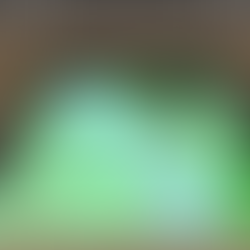TDEMO Game 5: Long-Term Project
- miketfkee
- Dec 14, 2020
- 4 min read
Updated: May 15, 2021
For the final game project of TDEMO, we were asked to create a group of 6 and make a game based around a range of ideas that we were allowed to choose from. Our group eventually decided on the prompt: "Create a dungeon crawler with one resource". We chose to make the dungeon crawler with the idea of a robot being capable of merging with other robots in a facility in order to escape, and the one resource being Energy.
The Energy resource would be used for everything the player was capable of doing, like walking, firing weapons, merging and taking damage. There would be recharge stations that recharged the player's energy, and merging with other robots would also use up different amounts of energy.
For our group, we split up into groups based on what we were capable of and best at doing - coders, designers and artists. One benefit of our group was that most of us were able to do multiple things rather than specializing in one group, so we could have multiple people doing multiple things rather than only having one person on art, per say. I chose to work on design, with the sub-role of coder when necessary, so my first job was to make something that could work independent of how the progress on the main game was going. This was the main screen, which was something I had worked on before.
As there was no art created for any of the game thus far, I only needed to create the buttons for the scene - Play, Settings, Controls and Quit, all of which I could replicate from my previous projects. After the levels for the games are completed, I could easily link the Play button to the game's scenes. (In the end, we had no actual settings for the game itself, so I replaced it with a Credits page listing what every member worked on.)

We decided that our game would be split into levels, each with a distinct theme. In each level, there would be different rooms that would be randomized each time the player entered a door. Importantly, we decided not to procedurally generate the rooms like some other dungeon crawlers would due to concerns about time, as our team had 2 members that never turned up. After Maxine had created blueprints of the first level, which was going to be themed after a Science Lab, I started building prototypes of the rooms in Unity.
Even with the blueprints, I wanted to make some adjustments to the rooms themselves. Since it was supposed to be a science lab, I decided to turn off the shaders so the lighting would look white to reflect a supposedly clean and orderly laboratory.
The second level would be themed around a jungle, but this time I would design them myself rather than referencing blueprints. I wanted the levels to have a more irregular feel, compared to the symmetry of the previous design. As such, I aimed to avoid having similar layouts or symmetry to any of the previous level's rooms, as well as experimenting with rooms that weren't just rectangles or squares. Since it was a jungle, I wanted there to be a texture for the walls that would just be a row of trees, as well as singular tree trunk textures for pillars. I also incorporated water into some levels as a way to break up the otherwise flat ground, as I wasn't sure how the player character would handle going up and down surfaces yet.
Since the game only had one resource, the UI for the game would be fairly simple: a Energy bar and a symbol that showed you what weapon you were using. The Energy bar would just be a Slider, and I edited an energy symbol from the internet and gave it color to decorate the bar. As for the weapon symbols, Gregory created an array of symbols for use with the UI.
When the textures were done, I was able to apply them to the existing levels to get a better idea of how the finalized levels would look, and passed on feedback to the art team about how some textures could be improved to work with the larger scale of some parts of levels (in this case, the de-charging pads looked weird due to some rooms having much larger pads than was expected to be used with the texture). In addition, Ben came up with the idea of covering the visible areas of the outsides of the rooms with flat planes in order to keep the rooms from looking unfinished outside.
As we approached the deadline, some rooms needed to be redesigned due to a shift in inspiration from a Enter the Gungeon-themed layout to a Hades-style layout. What I felt separated the newer room designs from my old ones was that the new rooms were simplistic, usually a square with several walls to act as obstacles. On the other hand, I avoided the use of walls and attempted to convey a theme, specifically with the Jungle levels.
In the end, while our group had undertook a project meant to be done by 8 people with only the work of 6, I felt that we came together and cooperated well under the circumstances. There were no major disagreements, we communicated frequently and helped each other when we needed it. As my first time ever making a game on this scale, I feel that it was an amazing opportunity to showcase what we had learnt over the past 4 games we had to make for Game Jams.













Comments